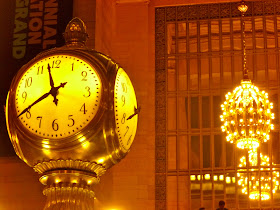After
announcing the miserable news last week that March 30 will be the last day for Chelsea's 34-year-old Rawhide bar, I went by on a quiet and snowy afternoon to talk with the bar's owner, Jay Goudgeon. We sat at the bar and he told me stories.

The Rawhide, Jay explained, is important because it's part of gay history in New York City. It's the type of bar where people know you, a neighborhood place. "For a lot of guys, it was the first gay bar they ever walked into, and they made a lot of long-lasting friendships here."
Back in the day, he said, "
you were kind of an outlaw if you came in here. And you sat next to all kinds of people. Famous people, busboys, everybody. We were here before Chelsea was 'Chelsea.'"

"When the Rawhide opened in 1979,
it was the first gay bar in Chelsea and the neighbors were incensed. At 8:00 in the morning, they'd start throwing bricks at the windows. Every day. Then some of the customers brought cartons of eggs, and they'd throw the eggs at the brick throwers."
Eventually, the brick and egg wars stopped and the neighbors grew to appreciate the Rawhide, a friendly bar that kept its lights on late into the night, protecting the corner from drug dealers and hustlers.

But times have changed in Chelsea.
While most neighbors still appreciate the Rawhide, "
the people in the new multimillion-dollar apartments complain about noise and people smoking out front," said Jay, "but we've always run a tight ship. It was funny
what Christine Quinn said in that magazine. I doubt she's ever set foot in this bar. I would know if she did. It's hypocritical.
Bloomberg is chipping away at the fabric of this city. People used to come because it was a 24-hour city, and now it's becoming a 9 to 5 city. We fought against that. We like to be open. We stayed open through blizzards, hurricanes, blackouts. We stayed open not to make money, but because people needed a place to go and be with their friends. That's our tradition. Because it's New York, and New York is not supposed to shut down."

The Rawhide was open on 9/11, too.
"We were open that day," Jay explained, "because we used to open at 8:00 in the morning, back when people packed in after the after-hours clubs. We had no TV, just dance music on. We had no idea. And then, outside the windows, all the traffic on 8th Avenue just stopped. One of my barbacks had a radio and he said that one airplane, then another, had flown into the towers. A lot of our customers worked down there. Slowly, they came drifting in, just covered in ash.
One of our regulars came in to wait for his partner, who worked in the Trade Center. 'I know he'll be here,' he said, 'because this is our bar.' He waited all day. Eventually, we all realized that his partner wasn't coming. After that, every year on 9/11 that gentleman comes in. He has one drink, just one, and I know he's still waiting. But on that day, that's when I learned what this bar is all about for people."
 Jay hopes to open a new Rawhide in an undisclosed location on the East Side
Jay hopes to open a new Rawhide in an undisclosed location on the East Side. (The deal is not yet done.) He plans to bring the Tom of Finland prints--the originals are in storage--and the wooden Rawhide sign that once collapsed from the bar's facade, but
the motorcycle that has hung over the pool table since no one knows when is being raffled off. A sign on it reads, "Own a piece of Rawhide history." Raffle tickets are $25 and the winner will be announced at the bar's
big goodbye bash on March 30. All are invited. They open at noon.
"If that motorcycle could talk," said Jay, smiling. "One time, a customer told me he woke up chained to that bike first thing in the morning."

I asked Jay what will be lost when the Rawhide closes for good. He said, "
Life will go on. It's the end of an era and the new place won't be the same thing. Everybody's sad at the moment. But it will become a part of people's memories. It'll live on."
 goodbye to the dogs who stopped at the water bowl
goodbye to the dogs who stopped at the water bowl




















































